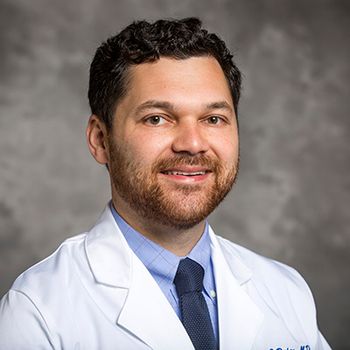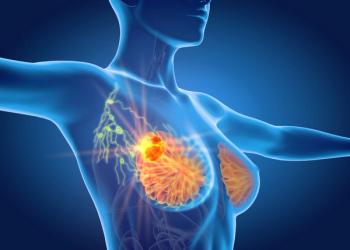
Oncology NEWS International
- Oncology NEWS International Vol 9 No 2
- Volume 9
- Issue 2
Adjuvant Goserelin Improves Disease-Free Survival in Premenopausal Breast Cancer
SAN ANTONIO-“Younger, premenopausal estrogen-receptor (ER)-positive breast cancer patients should be aware that there is an alternative to adjuvant chemotherapy,” Michael Baum, MD, professor of surgery, University College, London, said at the San Antonio Symposium.
SAN ANTONIOYounger, premenopausal estrogen-receptor (ER)-positive breast cancer patients should be aware that there is an alternative to adjuvant chemotherapy, Michael Baum, MD, professor of surgery, University College, London, said at the San Antonio Symposium.
Dr. Baum presented data from the ZIPP (Zoladex in Premenopausal Patients) trial, on behalf of four European study groups: the Cancer Research Campaign (CRC) Breast Cancer Trials Group; the Stockholm Breast Cancer Study Group, the South East Sweden Breast Cancer Group, and Gruppo Interdisciplinare Valutazione Interventi Oncologia (GIVIO).
From the world overview, Dr.Baum told ONI in an interview, we learned that chemotherapy and ovarian ablation are effective in premenopausal women, while tamoxifen (Nolvadex) is effective in postmenopausal women. That opened up many questions about the man-agement of breast cancer in premenopausal women.
The questions included: Could temporary ovarian suppression, using the LHRH analog goserelin (Zoladex), successfully fight breast cancer in premenopausal patients? Does chemotherapy work by ovarian suppression? Does tamoxifen have an effect in premenopausal women?
It was difficult to address all these questions at the same time, Dr. Baum told ONI, which is why the four study groups designed a 2 × 2 factorial trial. After surgery, premenopausal patients with early-stage breast cancer were randomized to one of four arms: 3.6 mg of goserelin every 4 weeks for 2 years; tamoxifen (20 or 40 mg) daily for 2 years; combination goserelin and tamoxifen; and no adjunctive hormonal therapy.
Adjuvant Chemo Allowed
Eventually, Dr. Baum said, it was decided it would be difficult to withhold chemotherapy from node-positive patients, so participating physicians could elect to provide adjunctive chemotherapy. Indeed, of the original 2,648 patients (a larger number than in the overview of ovarian ablation), 44% were node positive and, of these, the majority received adjuvant chemotherapy.
Dr. Baum noted that, initially, the main objective was to examine the difference in response between goserelin with tamoxifen and goserelin without tamoxifen and between tamoxifen with goserelin and tamoxifen without goserelin.
But again we were overtaken by events, he said. Halfway through the trial there was unequivocal evidence of the benefits of tamoxifen in premenopausal women. Thus, many of the centers elected to give tamoxifen and randomized only to goserelin or no goserelin.
The patients had a median age of 44, with about 24% younger than 40. About 40% in each group were node positive, and about 60% in each group were ER positive.
Five-Year Follow-up
Dr. Baum presented results on the effects of goserelin vs no goserelin with a median follow-up of 5 years. The number of first events was 411 in the no-goserelin group vs 330 in the goserelin group.
Goserelin had a significant effect on disease-free survival, with a relative risk of .77, a 23% risk reduction, compared with no goserelin, he said. There was a trend toward improved overall survival, but this has not yet reached significance, he added.
The major reduction was in local recurrences (163 vs 117). But Dr. Baum also cited an interesting finding regarding contralateral breast cancer: 42 cases in the control group vs 28 in the goserelin group.
This is approaching significance, he noted, and is fairly compelling evidence that we should be concentrating trials of Zoladex in the primary prevention of breast cancer in high-risk younger women.
Not surprisingly, he said, goserelin showed a greater effect in ER-positive patients than in ER-negative patients. The ER-positive patients had a relative risk of .71 for disease-free survival, compared with the overall effect of .77. There appears to be no benefit emerging for the ER-negative cases, Dr. Baum commented.
In the presence of chemotherapy, he told ONI, there was very little additional benefit to using goserelin. Thats no surprise if chemotherapy mediates the drugs effects by causing ovarian suppression, which is what we suspect. This so-called Zoladex effect seems to be more effective in women age 40 or less than in those over age 40.
Dr. Baum concluded that goserelin was most beneficial in the younger group of ER-positive patients who were not concurrently receiving chemotherapy. With proper investigation, he told ONI, in a year or two, we may have an alternative to chemotherapy that will preserve a womans fertility.
Articles in this issue
almost 26 years ago
Neoadjuvant Docetaxel Increases Response Rate in Large Breast Tumorsalmost 26 years ago
Faslodex, a Pure Antiestrogen, Shows Antitumor Activityalmost 26 years ago
Consider Node Dissection, Adjuvant Therapy in Elderly Breast Cancer Patientsalmost 26 years ago
Tumor-Associated Proteases Predict Outcome in Node-Negative Patientsalmost 26 years ago
Herceptin Plus Vinorelbine a Promising Combination in Advanced Breast Canceralmost 26 years ago
Small Risk of Breast Cancer Death After Invasive Recurrence in DCIS Patientsalmost 26 years ago
Paclitaxel/Herceptin Effective in Metastatic Breast Canceralmost 26 years ago
Conservative Surgery Alone Not Sufficient to Prevent RecurrenceNewsletter
Stay up to date on recent advances in the multidisciplinary approach to cancer.

















































































